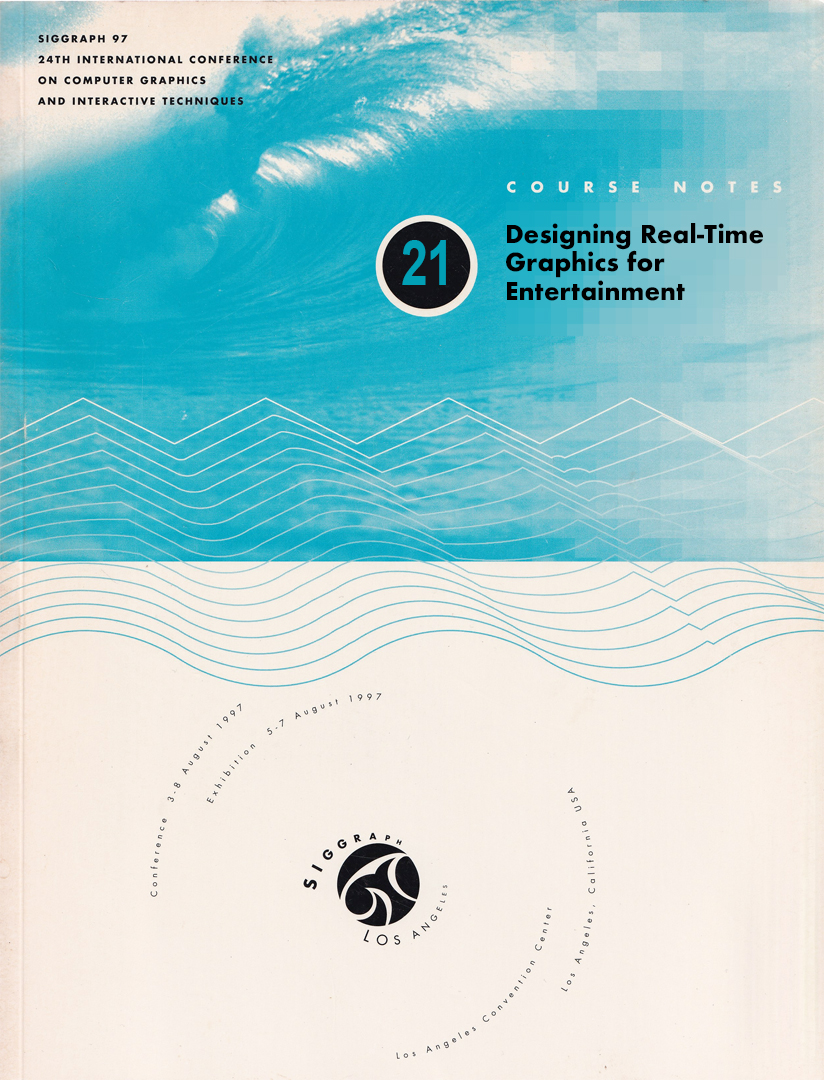“Designing Real-Time Graphics for Entertainment” by Jones, Carmack, Goslin, Miyamoto, VanHook, et al. …
Conference:
Type(s):
Entry Number: 21
Title:
- Designing Real-Time Graphics for Entertainment
Course Organizer(s):
Presenter(s)/Author(s):
Abstract:
- The graphics and programming techniques available to make the best use of graphics technology for high quality real time renderings. The topics include hardware and software architectures, graphics optimization, database tuning and other tricks of the trade. The visual simulation roots of many of these hardware and software techniques is also covered.
- Developers discussions of the use of those techniques as one component in creating interactive 3D experiences whether for home game consoles or for location based entertainment or theme park installations. The topics covered include tools and methods for content generation software frameworks and animation systems.
- Reference materials that provide context for the above or offer declined advice on the topics covered more broadly by the speaker’s presentations.
Description
This course offers a guide to the design and construction of real-time computer graphics for entertainment applications. Creating something truly fun with a computer is a difficult task, and using computer graphics in the pursuit of this goal does not make it any easier. We will cover the issues of creating real-time 3D games on hardware platforms that span a range from home game consoles up to high-performance image generators used m theme parks Top1cs mclude the hardware architectures of vanous game platforms, visual simulation tricks, 3D modeling, real-time character animation, game prototyping and programming. The speakers and included papers draw examples from the development of actual games, tools and game development environments.
The course has three related sections, each targeted at a different point on the price-performance curve. The examples chosen include destination-attraction location based entertainment using high-end graphics hardware, the populist middle ground of computation, the personal computer designed for use in the home, and game console machines, designed to be affordable by all.
Each of these design points will be discussed in terms of the computer graphics features and performance as well as the software approaches used to take full advantage of this hardware. In addition, since each new generation of graphics systems borrows something from its predecessors, we will review the trends in this technology migration and postulate on where they may lead. The papers printed in these course notes cover three areas.
Contents/Schedule PDF:
Contributed By:
- Mary Whitton
Location:
- Charles Babbage Institute Archives, University of Minnesota




